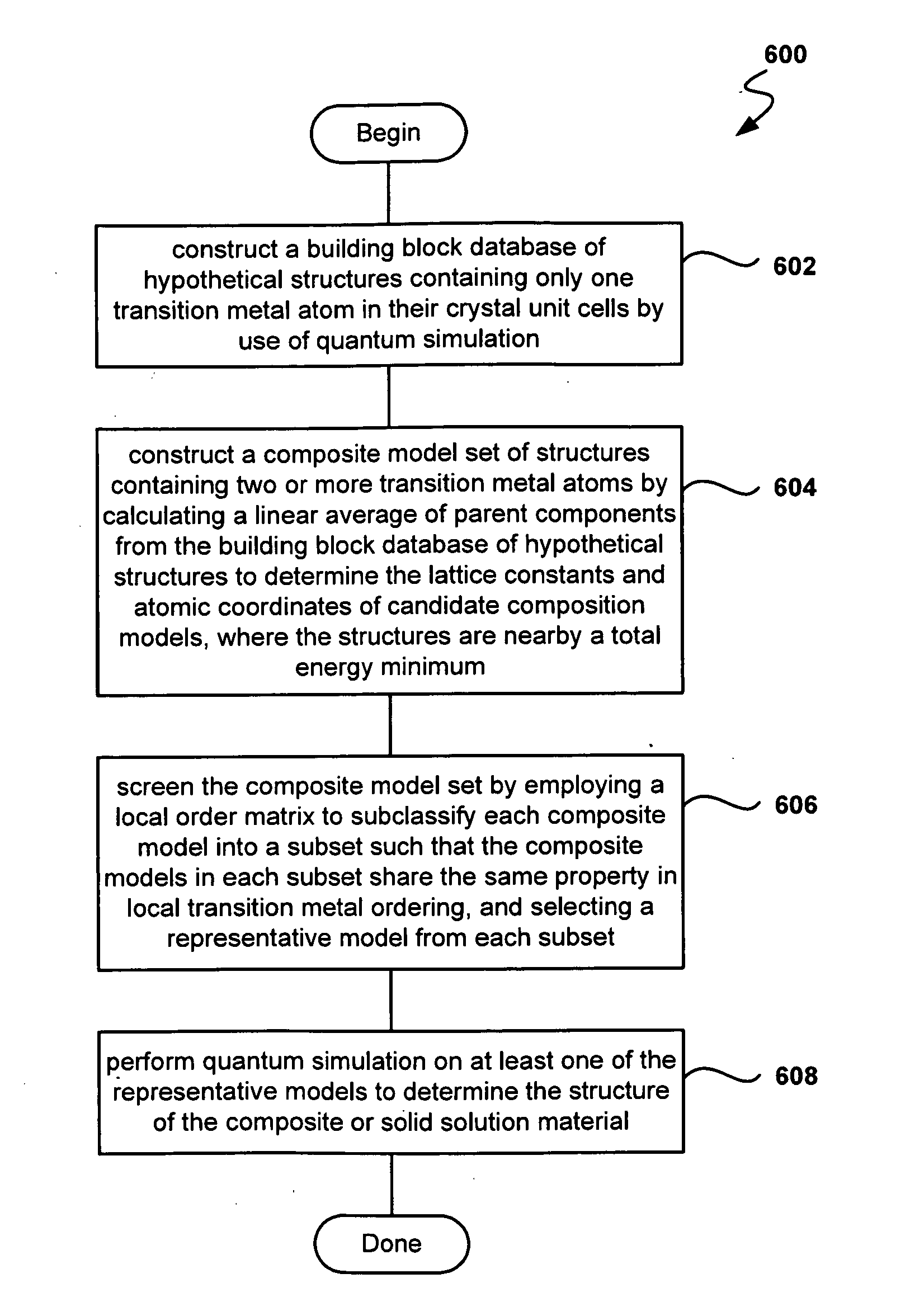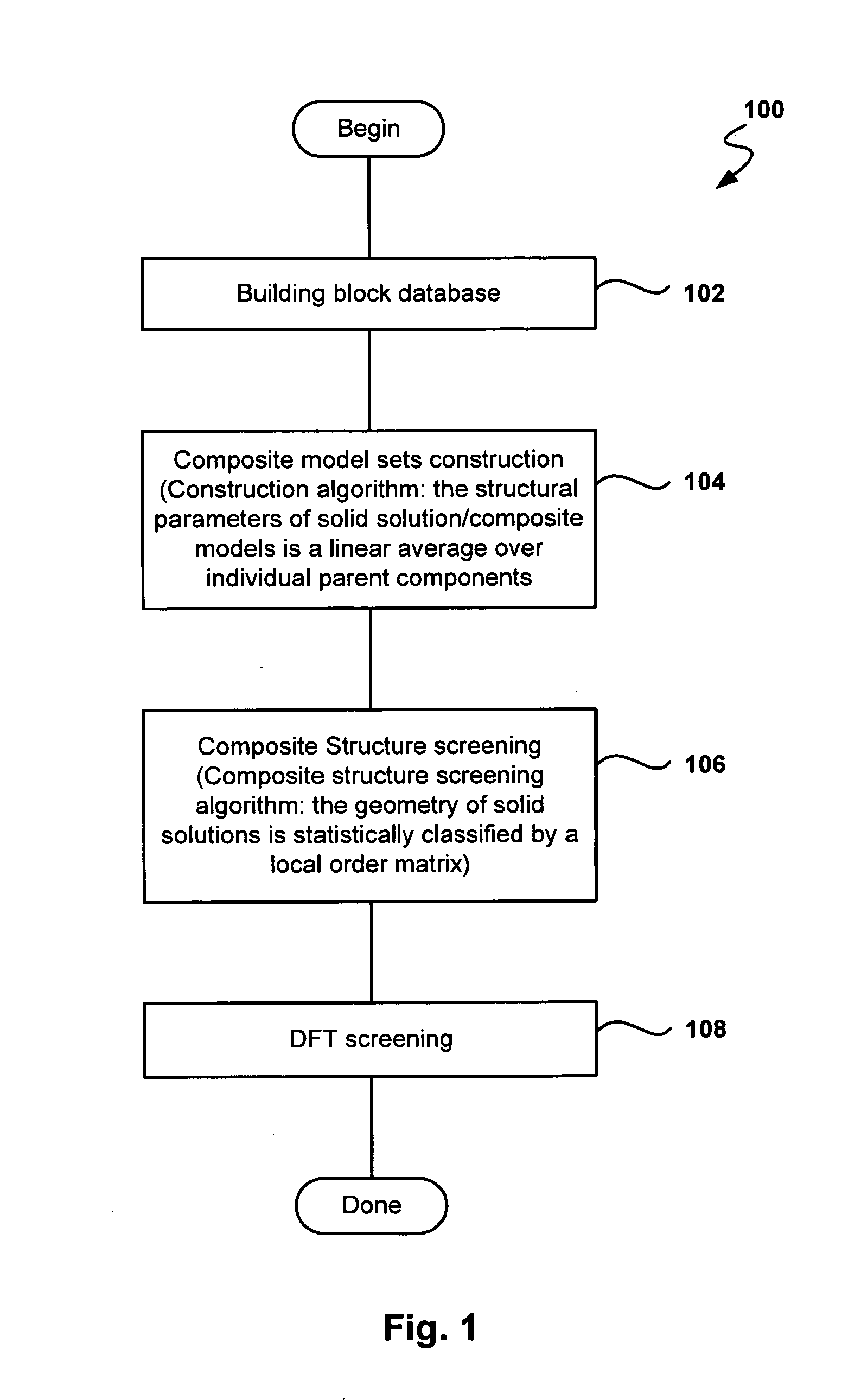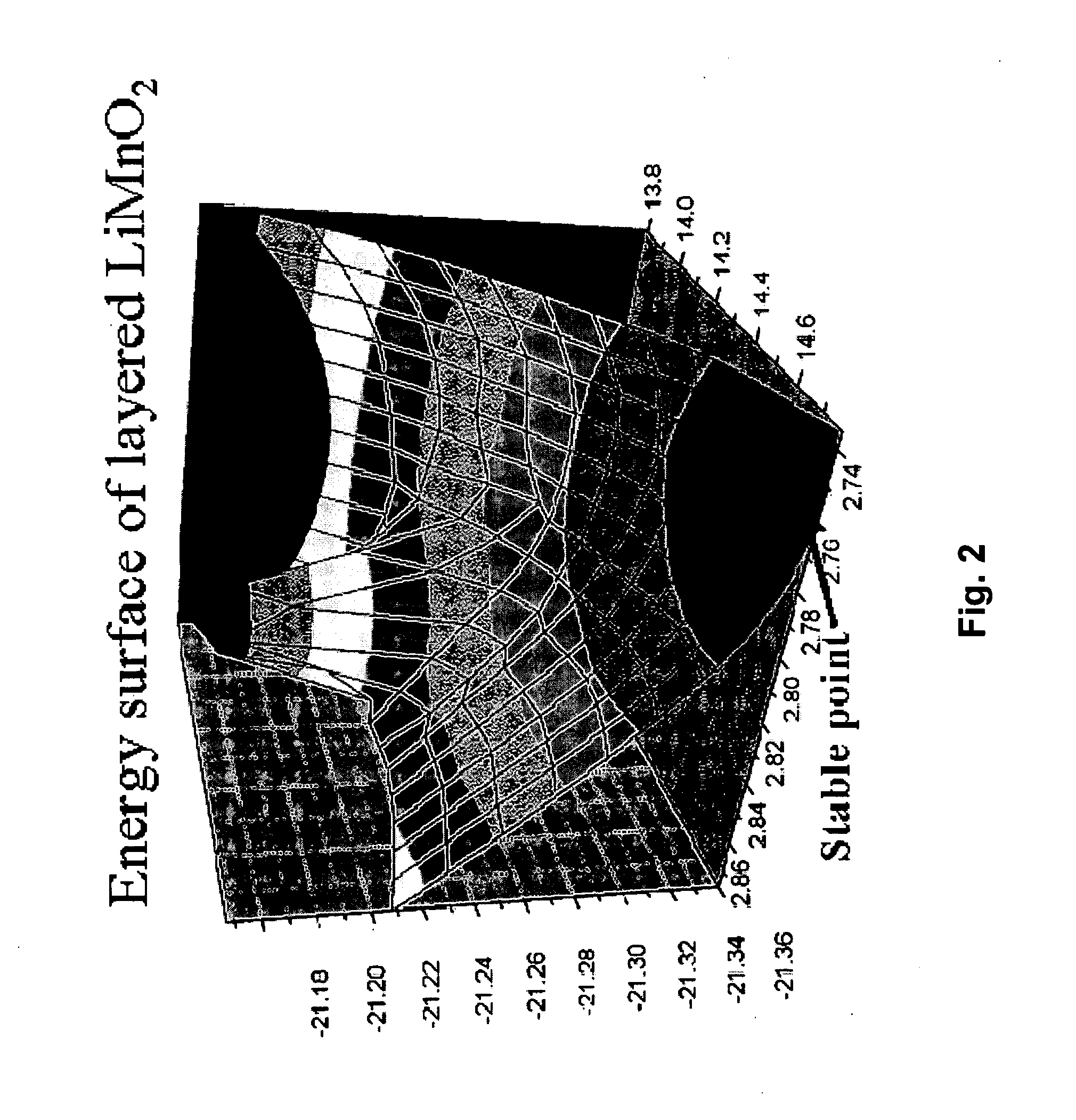Fast and High-Throughput Search Engine for Materials for Lithium-Ion Batteries Using Quantum Simulations
a quantum simulation and search engine technology, applied in the field of quantum simulations, can solve the problems of low charge and discharge rate capability, time-consuming and expensive, and limited application of cobalt in the emerging high capacity and high power battery market,
- Summary
- Abstract
- Description
- Claims
- Application Information
AI Technical Summary
Benefits of technology
Problems solved by technology
Method used
Image
Examples
example 1
[0063]Described here is a procedure to search a candidate structure using an example having a specific composition, i.e., Li(CoNiMn)1 / 3O2. The results prove the reliability of the algorithm and analyze the saving in computation costs. This validates the strategy as a fast and high-throughput search of candidate structures for lithium-ion battery materials.
[0064]The target composition Li(CoNiMn)1 / 3O2 has three transition metal elements: Co, Ni, and Mn. Thus, the first operation determines structural parameters of three constitutive components: LiCoO2, LiNiO2, and LiMnO2 by QS. The layered LiCoO2 structure is defined by two lattice parameters, (i.e. a and c) and contains four atoms per unit cell. Since the crystalline parameters of LiCoO2 and LiNiO2 have been measured, experimental data are used as starting points in QS structural optimization. Table 1 compares QS optimized structures of LiCoO2 and LiNiO2 with their experimental data. The structural parameters of both models agree wit...
example 2
[0068]Described here is a procedure to search a candidate structure using an example having a specific composition, i.e., Li(Co2 / 9Ni4 / 9Mn1 / 3)O2. The results prove the reliability of the algorithm. This validates the strategy as a fast and high-throughput search of candidate structures for lithium-ion battery materials.
[0069]This target material has a different mole ratio among the constitutional transitional metal elements from the previous example. The first operation is the same as in Example 1. The second operation constructs a relatively complete set of large-scale composite models that have the mole ratio (2 / 9, 4 / 9, 1 / 3) among Co, Ni and Mn using the same R30 template. The construction algorithm indicated in FIG. 1 results in 1260 different composite models.
[0070]The next operation uses the local order matrix to classify the 1260 models into a smaller subset of eight representative models. Further QS is only needed for the eight representative models.
example 3
[0071]Described here is a procedure to search a candidate using an example having a specific composition, i.e., Li(Fe1 / 9Ni5 / 9Mn1 / 3)O2. The results prove the reliability of the algorithm.
[0072]This target material has a different mole ratio and constitutional transition metal elements from the previous two examples. Furthermore, LiFeO2 is not an experimentally well-defined structure. Thus, the first operation of Example 1 is performed in order to determine the data needed in the following operations. The second operation constructs a relatively complete set of large-scale composite models that have the mole ratio (1 / 9, 5 / 9, 1 / 3) among Fe, Ni and Mn using the same R30 template. The construction algorithm indicated in FIG. 1 results in 504 different composition models. The next operation uses the local order matrix to classify the 504 models in a smaller subset of five representative models. Further QS is only needed for the five representative models.
[0073]Examples 2 and 3 illustrate ...
PUM
| Property | Measurement | Unit |
|---|---|---|
| structure | aaaaa | aaaaa |
| lattice constants | aaaaa | aaaaa |
| density functional theory method | aaaaa | aaaaa |
Abstract
Description
Claims
Application Information
 Login to View More
Login to View More - R&D
- Intellectual Property
- Life Sciences
- Materials
- Tech Scout
- Unparalleled Data Quality
- Higher Quality Content
- 60% Fewer Hallucinations
Browse by: Latest US Patents, China's latest patents, Technical Efficacy Thesaurus, Application Domain, Technology Topic, Popular Technical Reports.
© 2025 PatSnap. All rights reserved.Legal|Privacy policy|Modern Slavery Act Transparency Statement|Sitemap|About US| Contact US: help@patsnap.com



